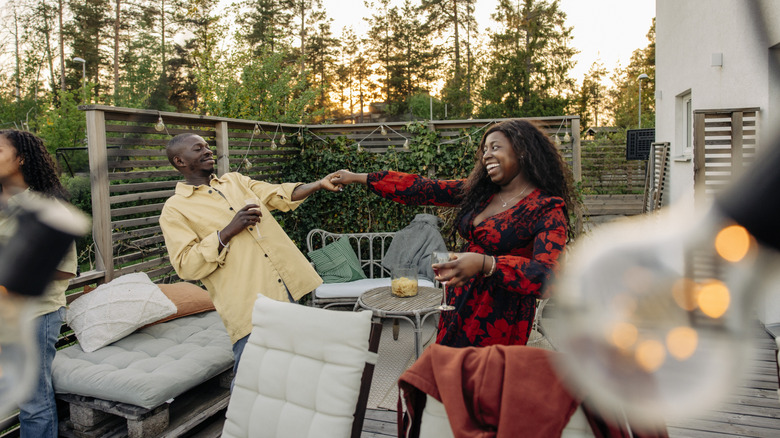Creating a Private Outdoor Space with a Living Patio Privacy Wall
Designing an outdoor area that feels private yet open is a delicate balance. Whether you’re creating a cozy DIY privacy nook in your backyard or revamping your patio for relaxation and entertaining, finding the right solution can be challenging. If you’re looking to block out wandering eyes without altering your yard, there are several options available. One affordable and stylish choice is using drop cloth curtains, but another increasingly popular alternative is a living patio privacy wall.
Living fences, which use shrubs and trees to create natural boundaries, have become a favorite among homeowners. This DIY project brings the same concept to your patio, offering a biophilic touch that blends seamlessly with your outdoor space. The best part? All you need is a set of planters and your preferred plants. Additionally, if you decide to expand this idea to your entire yard, it can attract more birds and wildlife, adding both beauty and biodiversity to your environment.
Choosing the Right Plants for Your Living Wall
Selecting the appropriate plants is crucial for the success of your living privacy wall. You’ll want to choose species that are low-maintenance and well-suited to your local climate. Consider shrubs or flowers that attract pollinators like bees or butterflies, or even plants that draw in your favorite birds. For those who prefer minimal upkeep, artificial trees such as the 5-foot artificial cedar topiary trees from the Silk Tree Warehouse offer a long-lasting, maintenance-free option.
When it comes to planters, there are many choices available. The Veradek block series plastic planters are an excellent example due to their weather-resistant design, sleek look, and high ratings. These planters not only provide durability but also add a modern aesthetic to your outdoor space.
Gathering the Supplies and Setting Up Your Wall
The most challenging part of this project is selecting the right supplies. Once you have your planters and plants ready, the next step is to begin designing your custom privacy fence. Start by positioning your planters. It’s easier to move them before adding soil and plants, especially if you’re working alone. If you’re only concerned about privacy on one side of your patio, you may not need as many planters.
Once the planters are in place, the final step is adding your plants. This process varies depending on the type of plants you choose. Some people, like the content creator featured in the original article, use artificial trees directly from their nursery pots, placing them into the planters. Others may opt for a traditional garden approach, filling the planters with soil before transplanting shrubs, tall flowers, or small trees. Keep in mind that flowering plants or deciduous bushes will only provide full privacy during certain seasons.
Maintaining Your Living Privacy Wall
No matter how you arrange your plants, proper care is essential to keep your living wall healthy and vibrant. Pay attention to the specific needs of your chosen plants and avoid common beginner mistakes, such as underwatering. With the right care, your new privacy fence will remain lush and attractive, transforming your outdoor space into a relaxing and stylish retreat.
By combining practicality with aesthetics, a living patio privacy wall offers a unique way to enjoy your outdoor area while maintaining a sense of seclusion. Whether you go for real or artificial plants, this project is a great way to enhance your home’s exterior and create a personalized outdoor haven.







